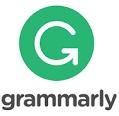PENILAIAN BEBAN KERJA MENTAL OPERATOR PRODUKSI PT XYZ DENGAN METODE DRAWS
DOI:
https://doi.org/10.25273/kaizen.v6i1.16332Keywords:
Beban kerja mental, DRAWS, ergonomi, produktivitasAbstract
PT XYZ is a textile industry which produces 4,500,000 yard of fabric in one month. Production division of PT XYZ has three processes, namely pre-treatment, dyeing, and finishing. In the finishing process, there are a lot of errors caused by human error, and according to ergonomics theory, one of the causes of human error is mental workload. The aim of this research is to assess mental workload on PT XYZ. In this study, an analysis of mental workload was carried out using the Defense Research Agency Workload Scale (DRAWS) method. The number of respondents was 26 employees. Based on the analysis conducted, the percentage of employees into the underload category is 15.38%, the optimal load category is 19.23%, the overload category is 65.38%. The indicator with the highest rating is Central Demand with an average of 64.32%. The company needs to carry out further evaluation because in all shifts the majority fall into the overload category.
Â
Keywords: DRAWS, ergonomic, mental workload analysis, productivity
Â
ABSTRAKÂ
PT XYZ merupakan industri yang bergerak di bidang tekstil, termasuk dalam industri yang besar dengan produksi kain mencapai 4.500.000 yard dalam satu bulan. Dalam divisi produksi PT XYZ terdapat tiga proses yang dilalui yaitu pre-treatment, dyeing, dan finishing. Pada proses finishing ditemukan cukup banyak kesalahan yang diakibatkan human error, dimana salah satu penyebabnya adalah beban kerja mental pekerja. Tujuan penelitian ini adalah menganalisis beban kerja mental karyawan di divisi produksi dan dari hasil analisis digunakan untuk memberikan rekomendasi. Dalam penelitian ini metode yang digunakan untuk analisis beban kerja mental adalah Defense Research Agency Workload Scale (DRAWS). Karyawan yang mengisi kuesioner adalah 26 karyawan yang masuk dalam tiga shift, yaitu shift pagi, shift sore, dan shift malam. Berdasarkan analisis yang dilakukan persentase karyawan yang masuk dalam kategori underload adalah 15,38%, kategori optimal load adalah 19,23%, dan yang masuk dalam kategori overload adalah 65,38%. Indikator yang memiliki penilaian paling tinggi adalah Central Demand dengan rata-rata 64,32%. Perusahaan perlu melakukan evaluasi lebih lanjut karena di semua shift mayoritas masuk dalam kategori overload.
Â
Kata kunci:Â Beban kerja mental, DRAWS, ergonomi, produktivitas
Â
Downloads
References
Ajabar, Manajemen Sumber Daya Manusia. Yogyakarta: Deepublish Publisher, 2020.
C. A. Pradhana and H. Suliantoro, “Analisis Beban Kerja Mental Menggunakan Metode NASA-TLX Pada Bagian Shipping Perlengkapan Di PT. Triangle Motorindo,†Ind. Eng. Online J., vol. 7, no. 3, pp. 1–9, 2018.
E. Aprilliadi, N. H. Djanggu, and R. Rahmahwati, “Pengukuran Beban Kerja Fisik Dan Mental Menggunakan Metode Cardiovascular Load (Cvl) Dan Defence Research Agency Workload Scale (Draws) Pada Operator Stasiun Kerja Rotary Di Pt. Sari Bumi Kusuma,†J. TIN Univ. Tanjungpura, vol. 5, no. 1, pp. 88–94, 2021, [Online]. Available: https://jurnal.untan.ac.id/index.php/jtinUNTAN/article/view/47916.
V. Methalina Afma, “Analisa Beban Kerja Operator Inspeksi dengan Metode NASA-TLX (Task Load Index) di PT.XYZ the Workload Analysis of Operator Inspection Using NASA-TLX (Task Load Index) in PT. XYZ,†Profisiensi, vol. 4, no. 2, pp. 118–122, 2016, [Online]. Available: https://journal.unrika.ac.id/index.php/jurnalprofisiensi/article/view/594.
Z. M. Utama, Manajemen Sumber Daya Manusia: Konsep Dasar dan Teori. Jakarta: UNJ Press, 2020.
I. Astuti, R.D. ; Iftadi, Analisis dan Perancangan Sistem Kerja. Yogyakarta: Deepublish Publisher, 2016.
T. Widyasti, A A, Sunardi, “ANALISIS BEBAN KERJA BAGIAN PRODUKSI DENGAN METODE DRAWS DAN MCH PADA AKTIVITAS PEMBUATAN CLAY,†J. Manaj. Ind. dan Teknol., vol. 02, no. 02, pp. 84–95, 2021.
T. R. Annisa, E. Achiraeniwati, and Y. S. Rejeki, “Pengukuran Beban Kerja Mental pada Stasiun Kerja Housing Menggunakan Metode DRAWS (Studi Kasus : PT . Solarens Ledindo),†Pros. Tek. Ind., vol. 5, no. 2, pp. 302–307, 2019.
D. A. Hestin Sri, “Journal of Industrial Engineering & Management Research,†vol. 4, no. 2, pp. 1–11, 2017.
M. Y. Syafei, B. Primanintyo, and S. Syaefuddin, “Pengukuran Beban Kerja Pada Managerial Level Dan Supervisory Level Dengan Menggunakan Metode Defence Research Agency Workload Scale (DRAWS) (Studi Kasus Di Departemen UHT PT. Ultrajaya Milk Industry & Trading Co, TBk ),†J. Rekayasa Sist. Ind., vol. 5, no. 2, p. 69, 2016, doi: 10.26593/jrsi.v5i2.2214.69-78.
H. A. Khoiri, W. Isnaini, and P. Cahyaningtyas, “Mental Workload Analysis of PMM Outbound Student Using Defence Research Agency Workload Scale (DRAWS) Method,†Opsi, vol. 15, no. 2, p. 175, 2022, doi: 10.31315/opsi.v15i2.6937.
H. A. Khoiri, “Evaluasi Beban Kerja Mental Mahasiswa PMM Outbound dengan NASA-TLX dan DRAWS,†Pros. Semin. Nas. Tek. Ind., pp. 13–25, 2022.
C. I. Erliana and S. Mawaddah, “Analisis Pengukuran Beban Kerja Supervisor Dan Fireman PT Perta Arun Gas Menggunakan Metode Defence Research Agency Workload Scale,†Ind. Eng. J., vol. 8, no. 2, 2019, doi: 10.53912/iejm.v8i2.411.
B. A. Susanto, S. Sunardi, and M. T. Safirin, “Analisis Beban Kerja Operator Produksi Koran Dengan Metode Defence Research Agency Workload Scale (Draws) Dan Modified Cooper Harper (Mch) Di Pt.Temprina Media Grafika Gresik,†Juminten, vol. 1, no. 6, pp. 49–60, 2020, doi: 10.33005/juminten.v1i6.133.
R. Maryati, “Analisis Beban Kerja Mental Dengan Menggunakan Metode Defence Research Agency Workload Scale (DRAWS) (Studi Kasus: Restu Konveksi, Tegalsari, Karanganyar),†Progr. Stud. Tek. Ind. Fak. Tek. Univ. Muhammadiyah Surakarta, pp. 1–12, 2019.
Downloads
Published
Issue
Section
License
With the receipt of the article by KAIZEN Editorial Board and the decision to be published, the copyright regarding the article will be transferred to KAIZEN Journal.
KAIZEN has the right to multiply and distribute the article and every author is not allowed to publish the same article that was published in this journal.

This work is licensed under a Creative Commons Attribution-NonCommercial-ShareAlike 4.0 International License.
Under the following terms:
Attribution — You must give appropriate credit, provide a link to the license, and indicate if changes were made. You may do so in any reasonable manner, but not in any way that suggests the licensor endorses you or your use.
NonCommercial — You may not use the material for commercial purposes.
ShareAlike — If you remix, transform, or build upon the material, you must distribute your contributions under the same license as the original.




